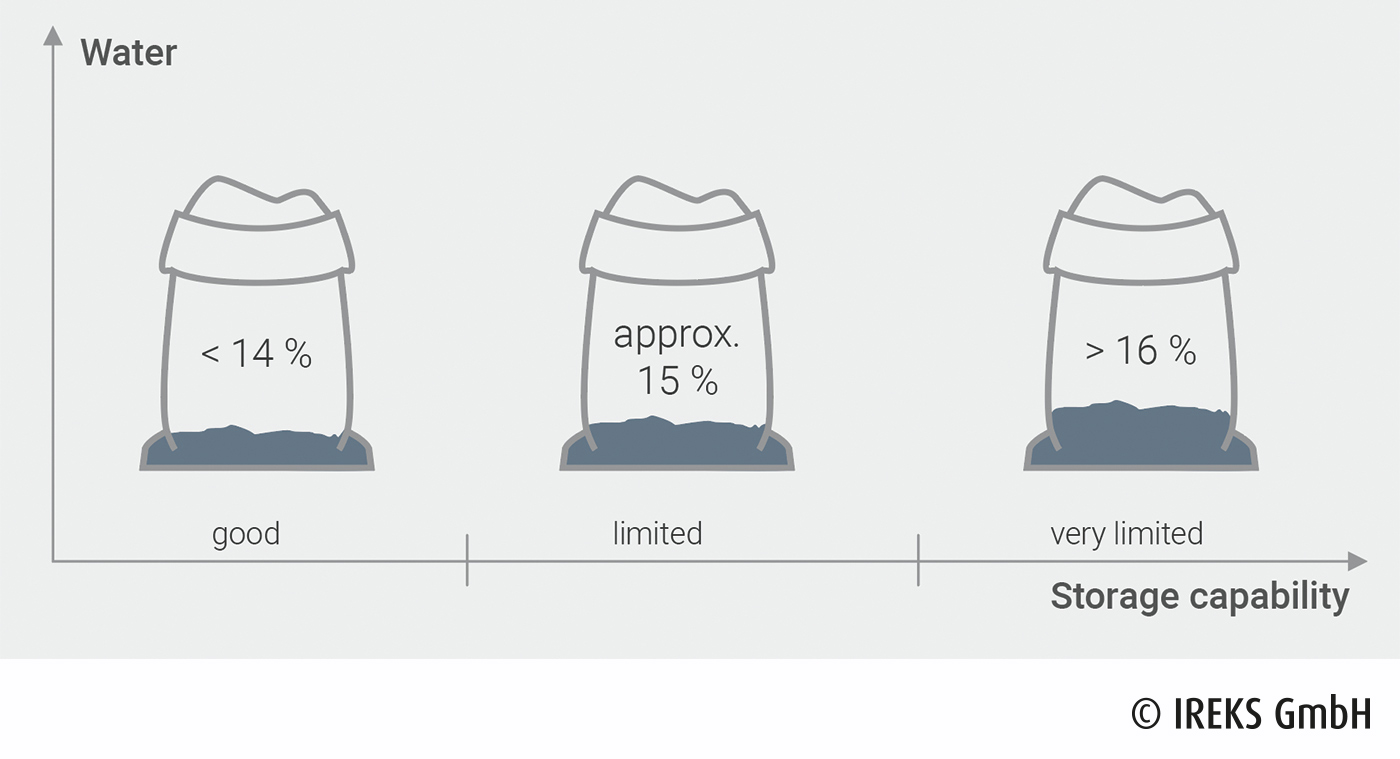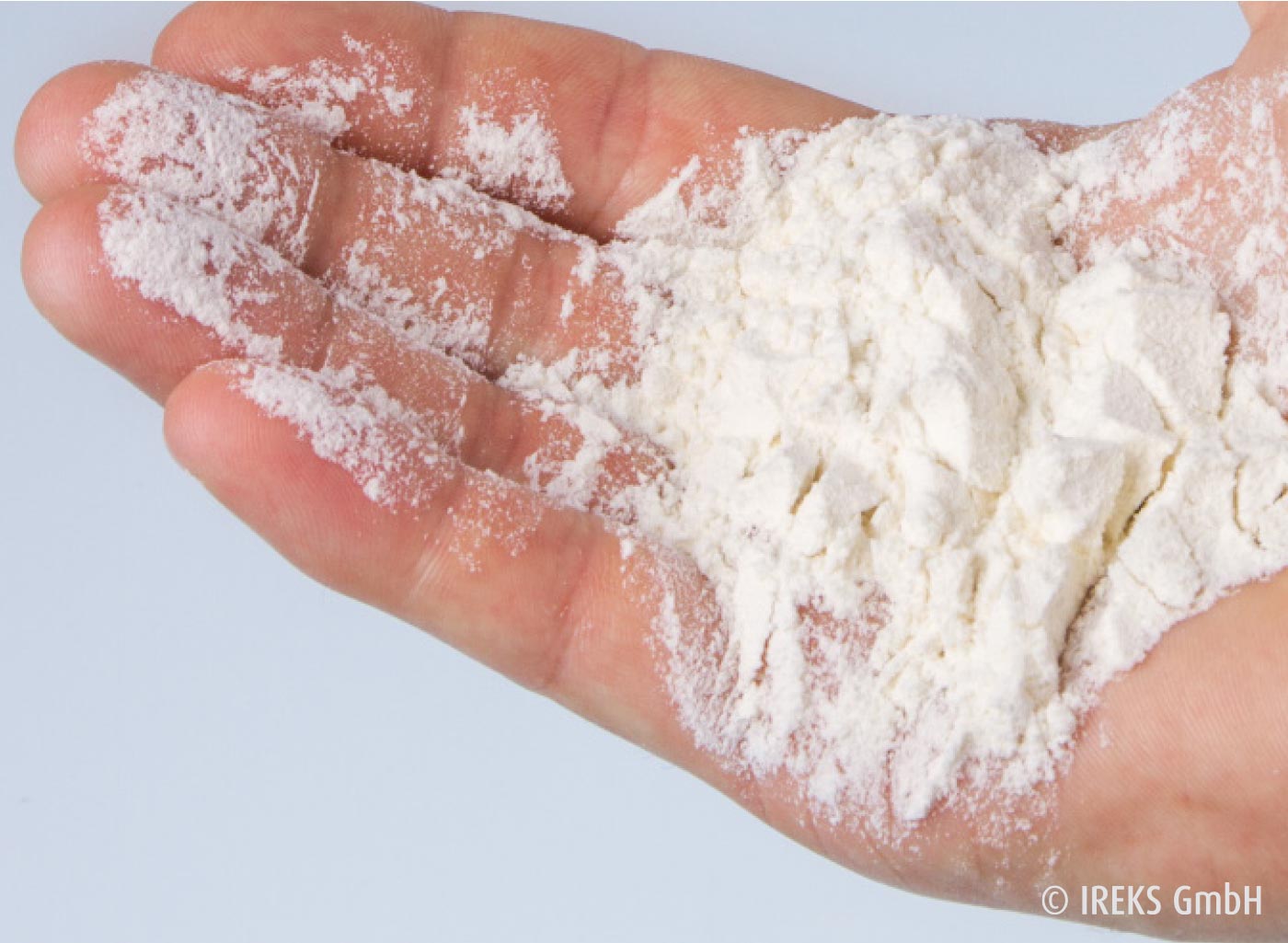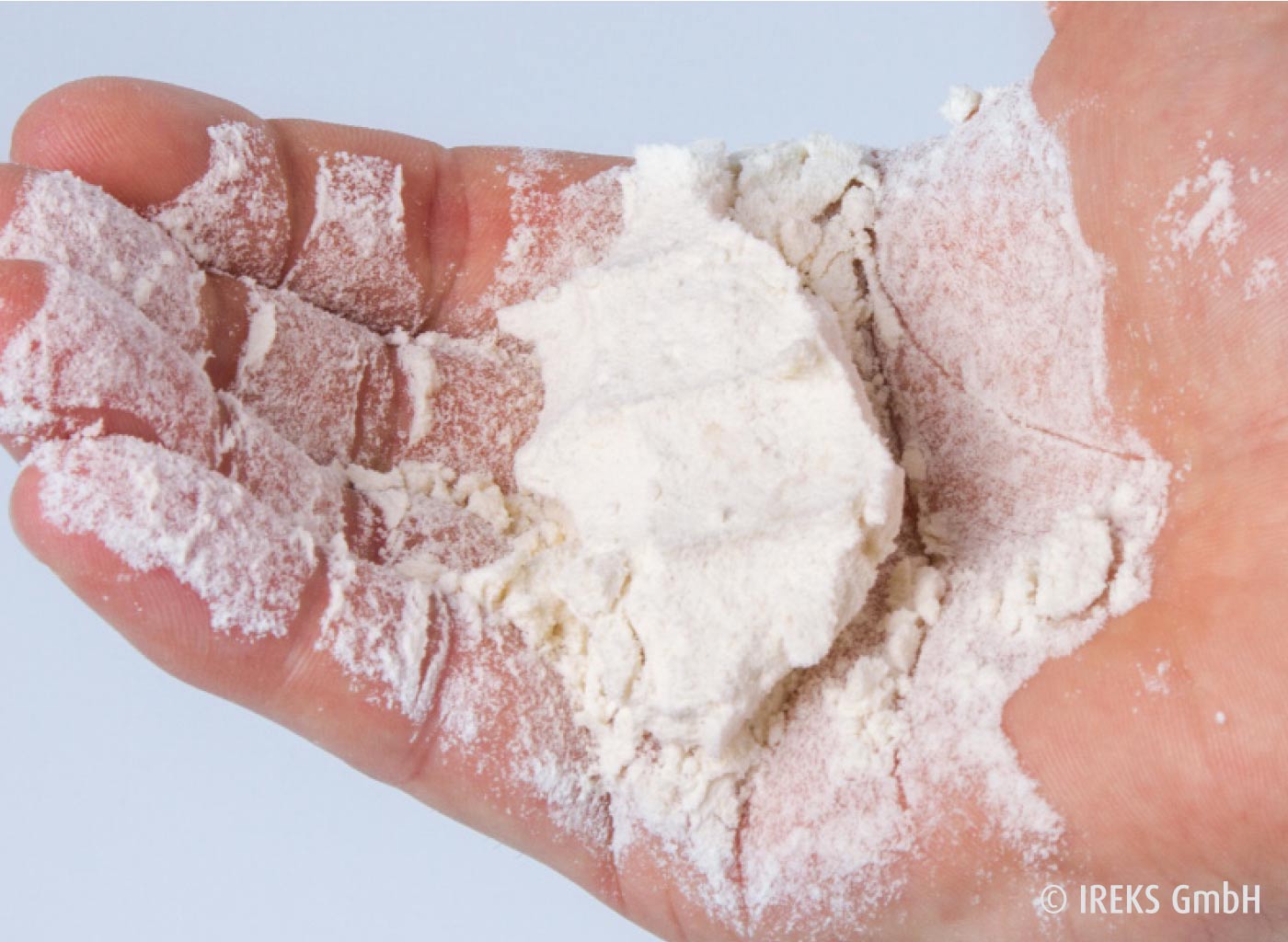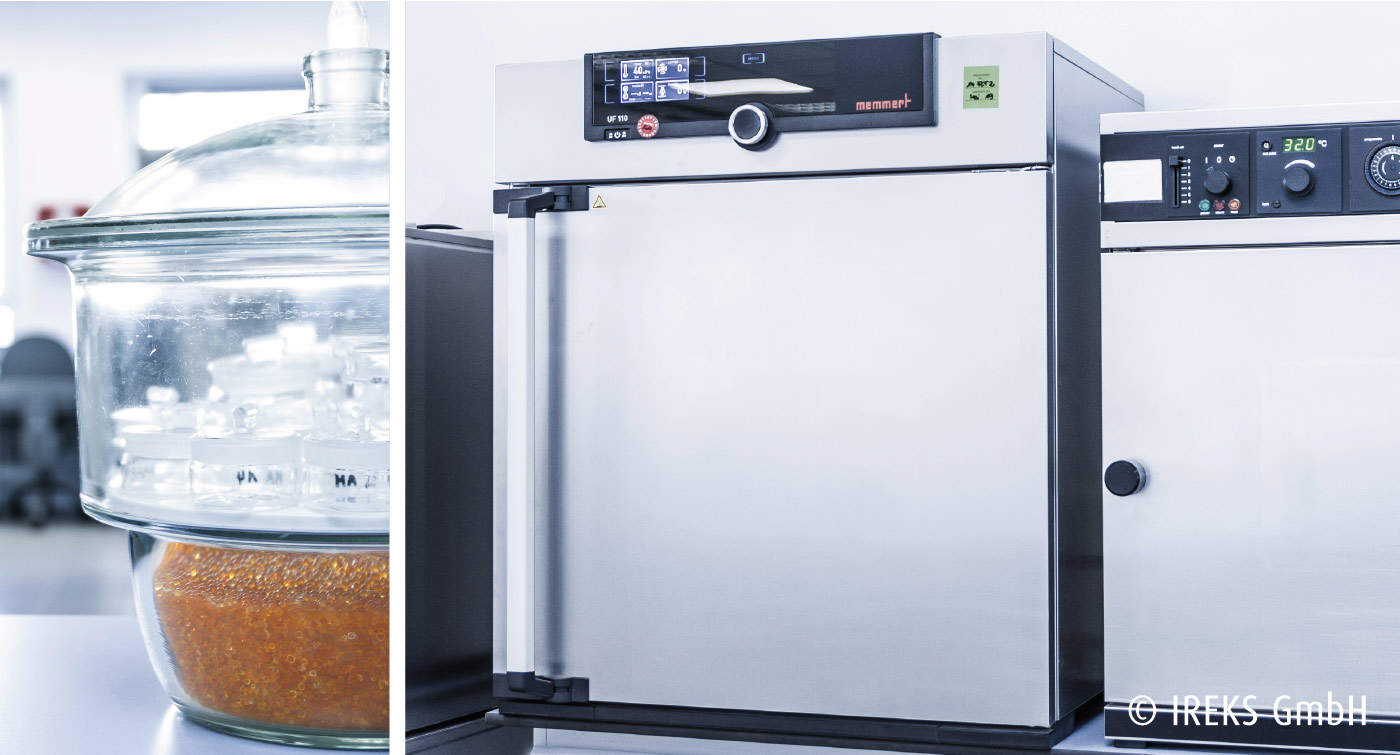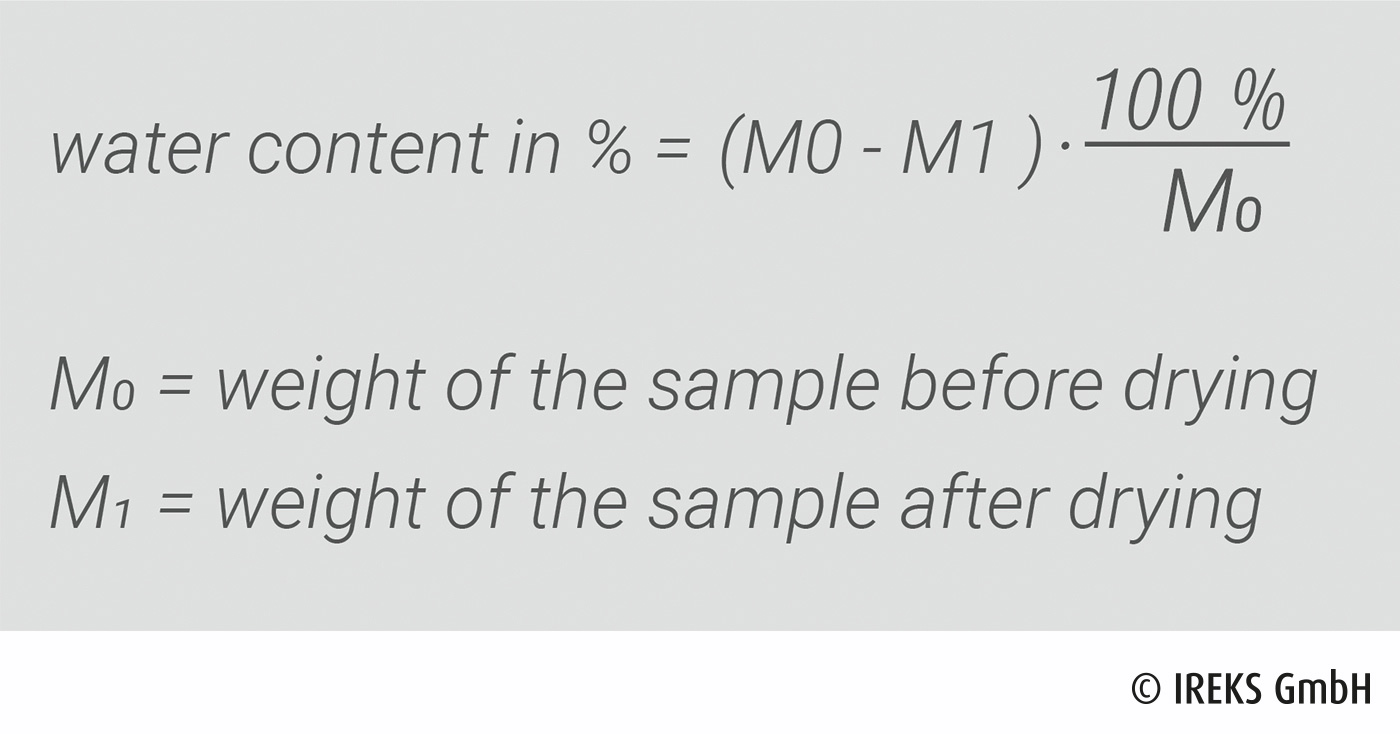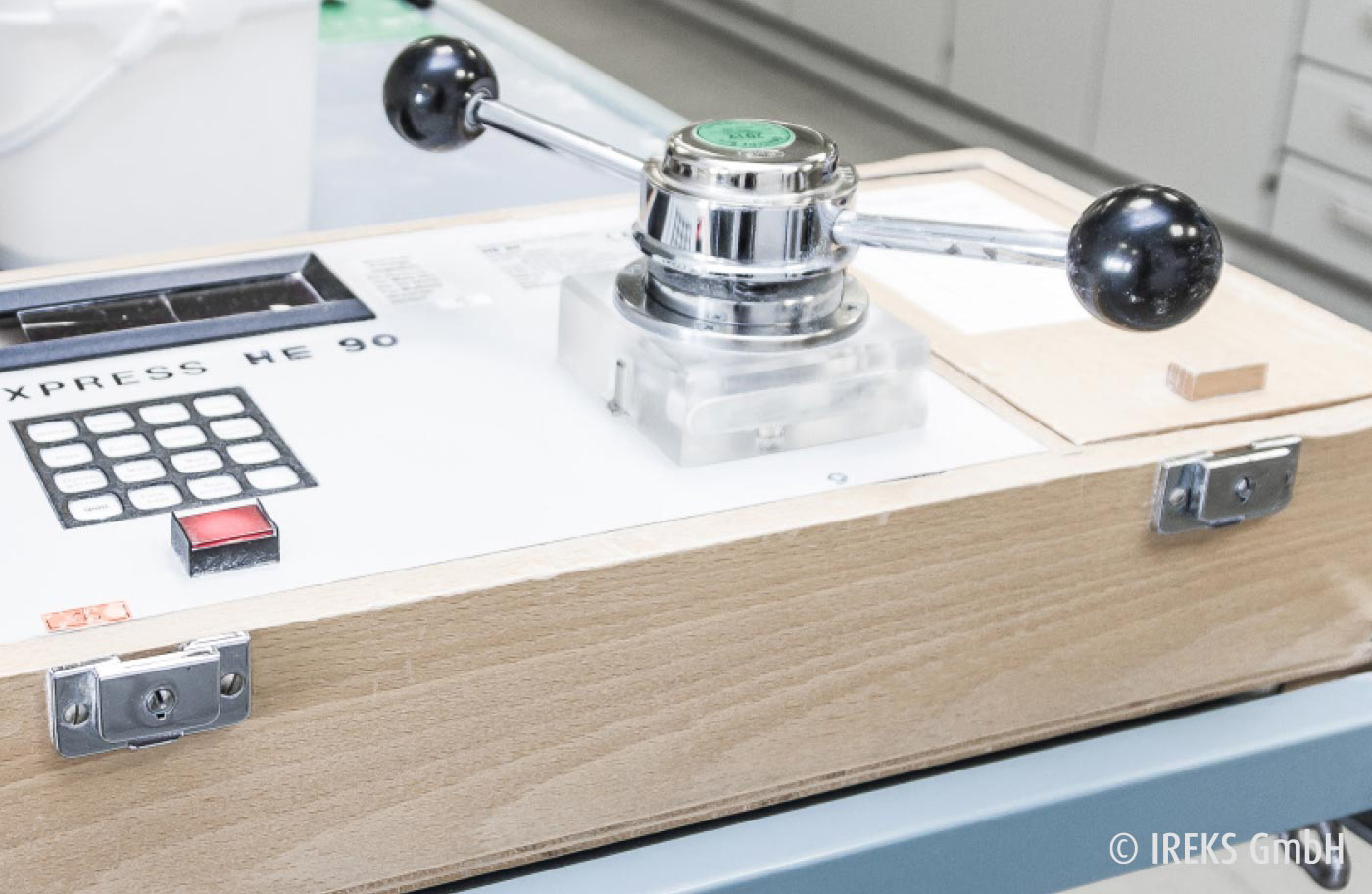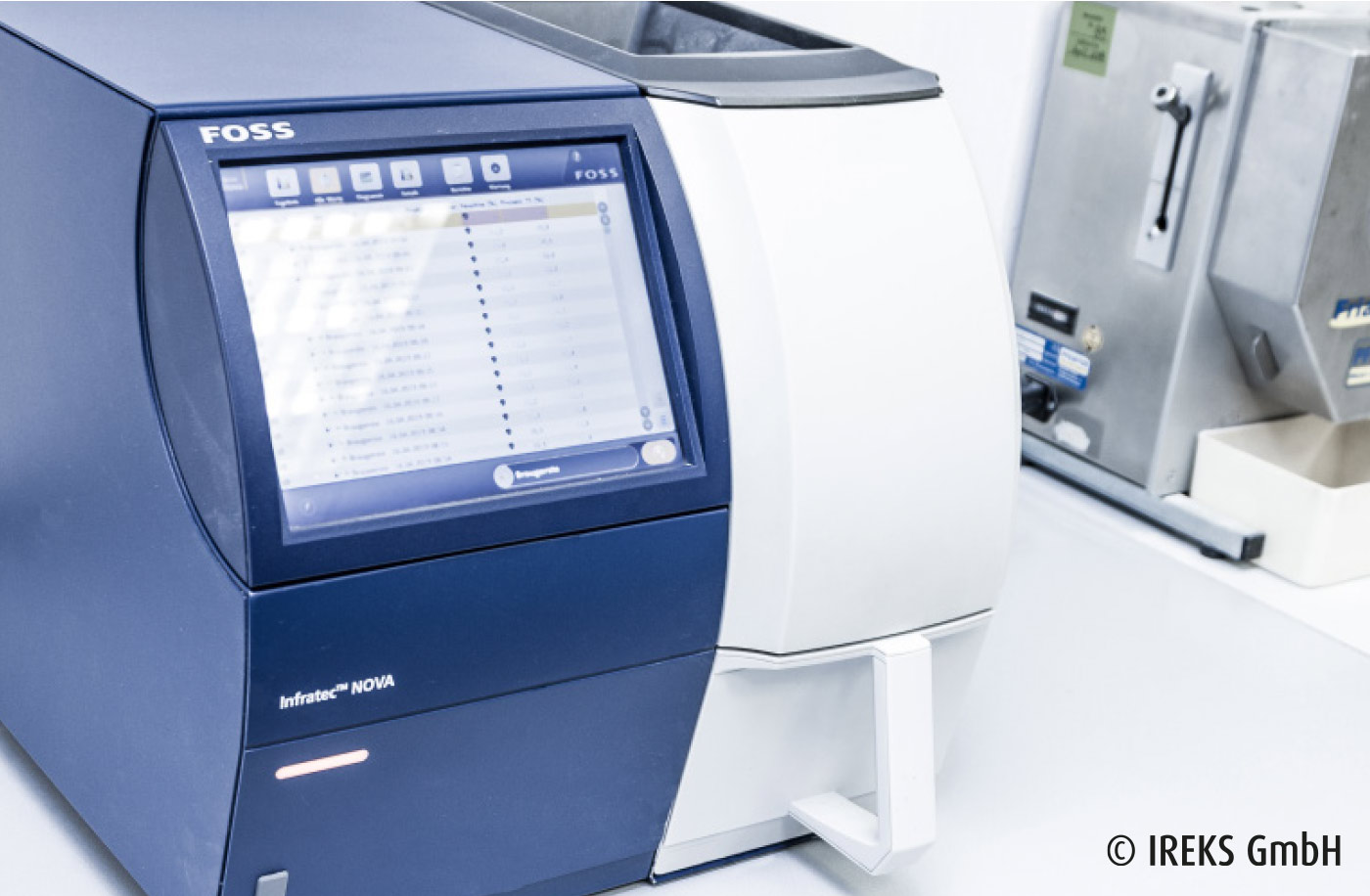The water content influences the storage capability of a flour. It should not exceed 15 %, as the flour can otherwise only be stored for a short period. As the result of a too high water content in the flour, the flowing capability is reduced in addition, which can cause difficulties when removing from the silo.
Testing in the ball of the hand
An initial subjective estimation of the water content of a flour can be determined by testing in the ball of the hand. Here, a handful of flour is pressed together in the ball of the hand and the hand then opened once more. If the flour falls apart more again as a fine powder, then the water content is low. If the flour separates into small lumps, then a normal water content is spoken of. If the flour remains in a ball, then a raised water content exists and the flour has a limited storage capability only.
Dry chamber method
A flour sample is dried for two hours at 130° C with the help of a dry chamber. After cooling the sample in the exsiccator, the weight loss is recorded and the result given in percent.
Rapid methods
As the dry chamber method is not practicable for testing several samples due to the long time required during the test, rapid methods are often used within Quality Assurance, with which the water content can be determined in approx. 60 seconds. These methods are not so exact as the dry chamber methods, but they are sufficiently precise for the incoming goods control of raw materials, for example.
Determination via electric conductivity
Via the strength of the electric conductivity of a flour sample, a conclusion can be made in regard to the water content, as the electric resistance declines proportionally to the falling content of moistness.

